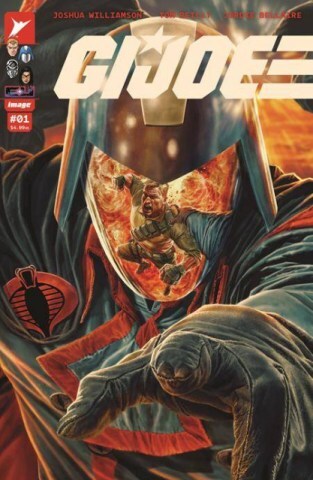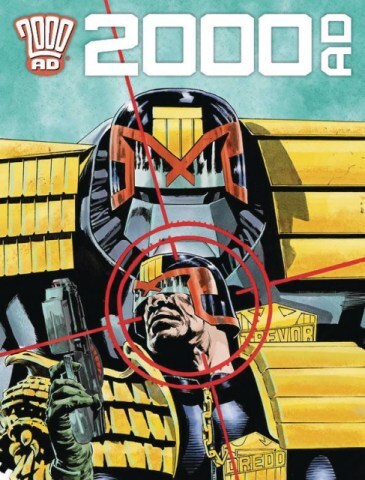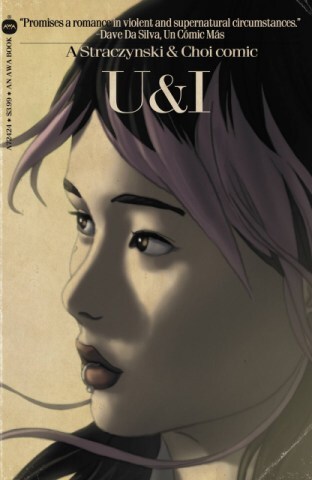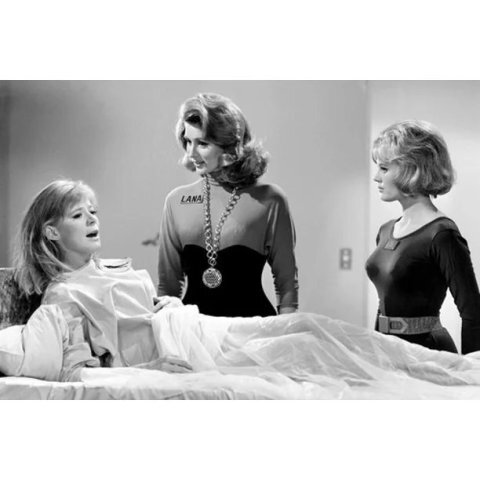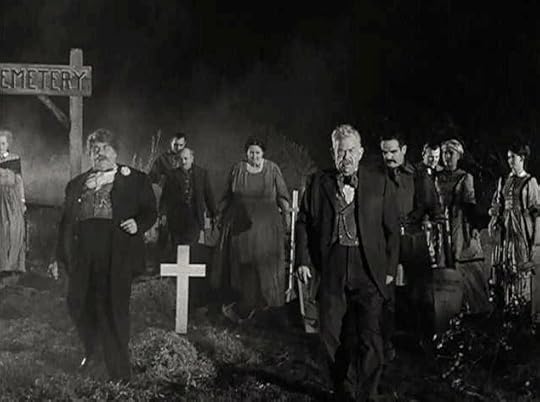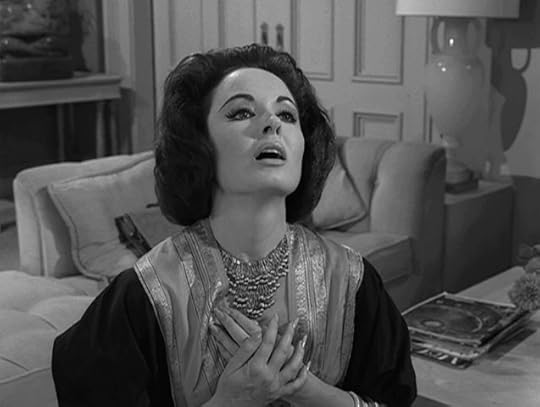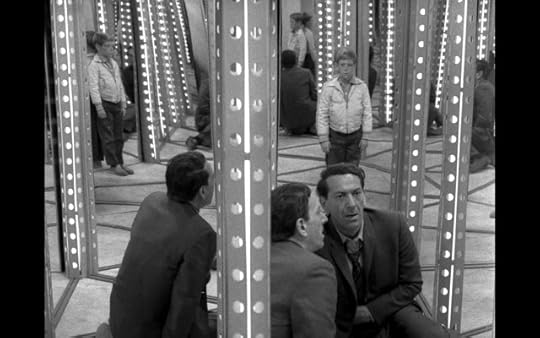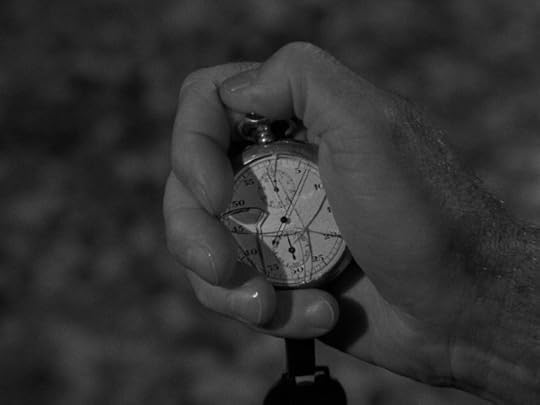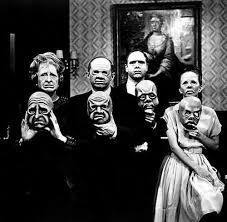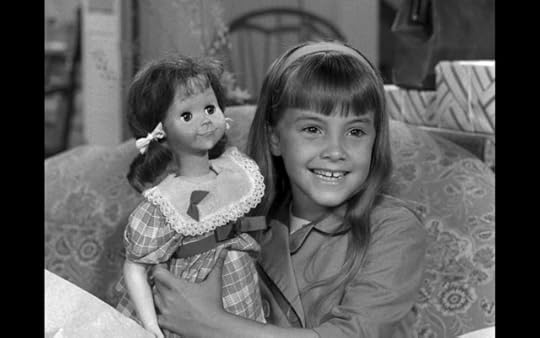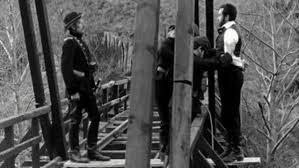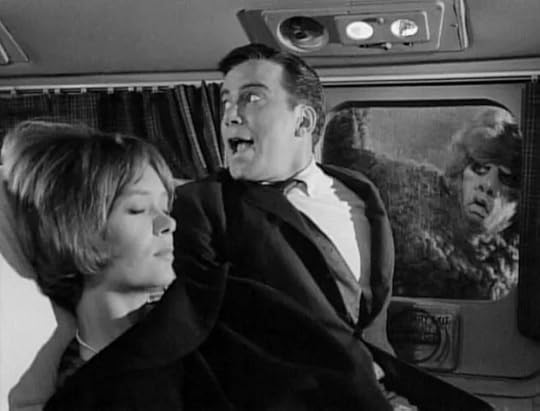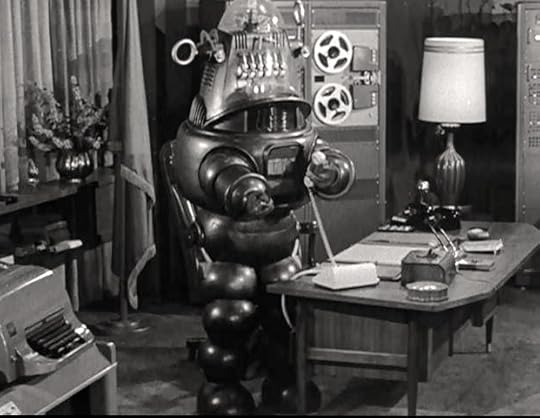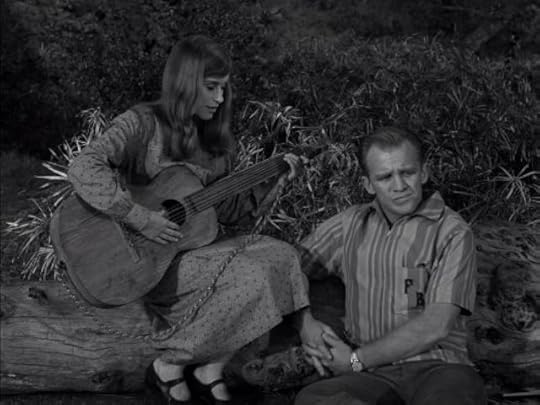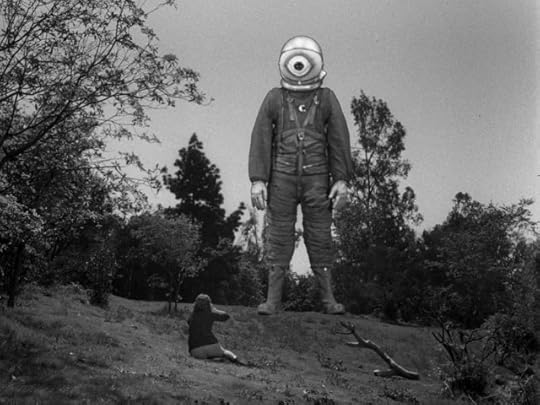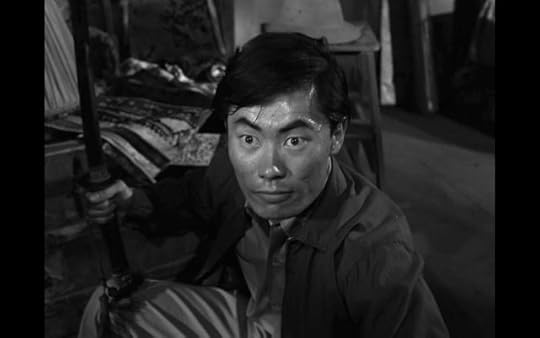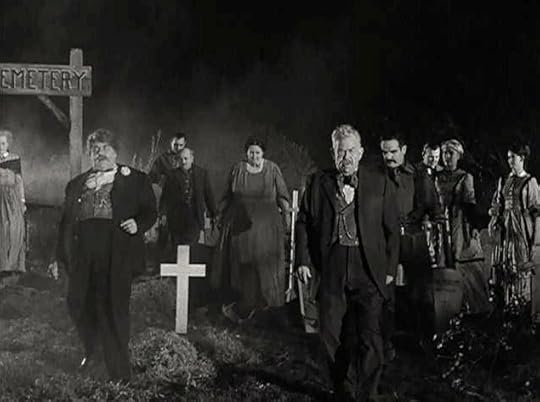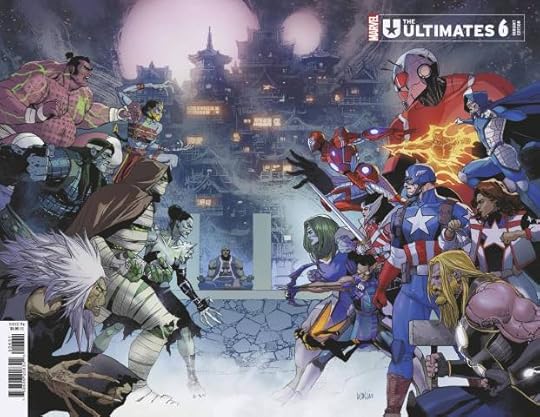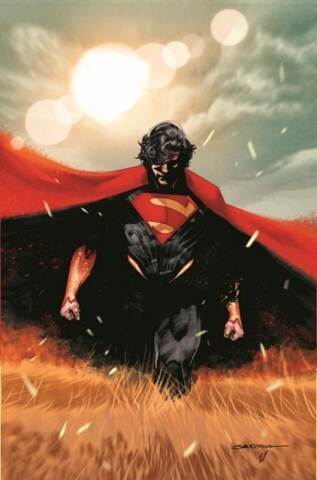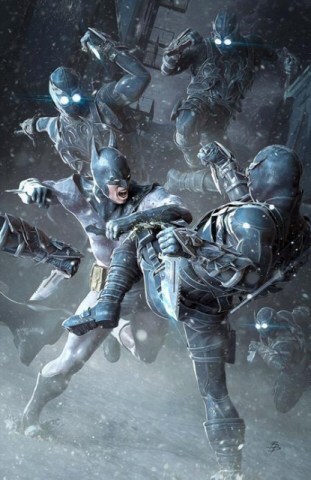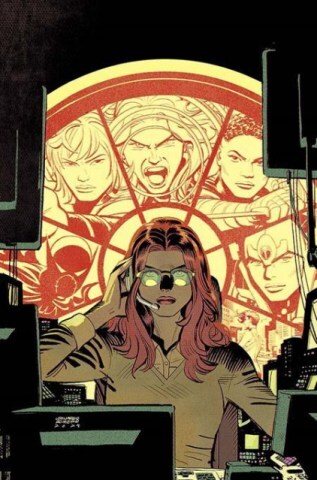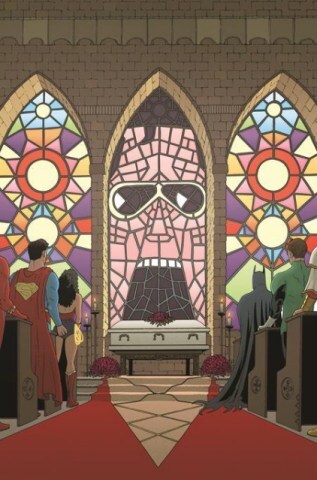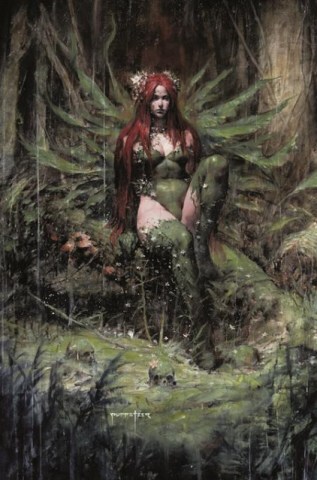Joseph Mallozzi's Blog, page 36
November 14, 2024
November 14, 2024: Amazing Covers!
A few that caught my eye this week…
Action Comics #1075 – cover art by Steve Beach
Batman: Uncovered #1 – cover art by Jeff Dekal
G.I. Joe #1 – cover art by Bjorn Barends
2000 AD Prog Pack: August 2024 cover art by Mike D. Perkins
U&I #6 – cover art by Michael Choi, Chris Ferguson
So, which were YOUR favorites?
The post November 14, 2024: Amazing Covers! appeared first on Joseph Mallozzi's Weblog.
November 13, 2024
November 13, 2024: My Twilight Zone Season 5 Top 10 Episodes!
I thought I’d have a harder time coming up with a Top 10 list for season 5 and I did, but not for the reasons I assumed. I thought I’d have a hard time coming up with ten strong contenders but, to my surprise, my initial list of candidates was 15+ episodes long. But, after much thought, I managed to narrow my ranking down to the following…
10) Number 12 Looks Just Like You
Loved the premise and the far-future setting, but I found the ending maybe just a little too ambiguous.
9) Mr. Garrity and the Graves
An unexpectedly fun episode with an unexpectedly fun twist at the end.
8) Queen of the Nile
Another delightfully dark twist caps this creepy descent into horror.
7) In Praise of Pip
A heartfelt episode that kicks off the show’s final season in fine style.
6) You Drive
Even though the possessed car had already been done, this one really stood out for me for its interesting and atypical (for The Twilight Zone) scope and direction.
5) A Kind of Stopwatch
This one was a lot of fun.
4) The Masks
One of the show’s creepiest episodes. So much so that I thought it would have been equally at home as an episode of Night Gallery.
3) Living Doll
A classic that still holds up today. The toughest part of this ranking was deciding on the order of these top three episodes.
2) An Occurrence at Owl Creek Bridge
A brilliant adaptation of the Ambrose Bierce short story.
1 ) Nightmare at 20,000 Feet
Goofy gremlin aside, this one is an edge-of-your-seat ride and one of the show’s very best.
Honorable mentions: Ring-A-Ding Girl, Uncle Simon, and Caesar and Me.
Tomorrow’s blog entry is this week’s Amazing Covers! (a day late) and then, Thursday, I’ll review The Twilight Zone’s entire run and bring you my list of what I considered the show’s Ten Best Episodes!
The post November 13, 2024: My Twilight Zone Season 5 Top 10 Episodes! appeared first on Joseph Mallozzi's Weblog.
November 12, 2024
November 12, 2024: Our Twilight Zone rewatch concludes with season 5, episodes 33-36!
Season 5, Episode 33, “The Brain Center at Whipple’s”
This episode first aired May 15, 1964.
The original title of this episode was “Automaton”.
The new computer installed at the episode is the same computer glimpsed at the end of “The Old Man and the Cave”.
Forbidden Planet (1956) breakout star Robby the Robot makes his third and final Twilight Zone appearance. According to episode director Richard Donner: “Robby had been on the MGM lot. We redressed him a little, painted him differently, and put another light on top of his head. He was in fairly good condition. In those days studios had great pride in their prop and wardrobe departments, so when you went to get something, there was no problem.”
Actor Richard Deacon, who played Mr. Whipple, attended high school in Binghamton, New York with Rod Serling. Reflecting back on the Mr. Whipple character and his career: “After seeing all he had to do in this show, I wondered what I had done to Rod in school to deserve it. If I didn’t wear glasses and have 40 years of unpaved road on my head, I probably wouldn’t be working at all.”
While I liked the premise, I found the execution dull. We never get a true sense of the factory, and the heart of the story is conveyed through seemingly interminable conversations. Rather than seeing the pivotal scene where Whipple gets replaced, we just hear about it after the fact. The shot of the robot back at the office is funny, but not enough to save this episode.
Season 5, Episode 34, “Come Wander with Me”
This episode first aired May 22, 1964.
Even though this was the third to last episode to air, it was actually the last Twilight Zone episode filmed.
A teenage Liza Minnelli auditioned for the role of Mary Rachel but was so nervous that she blew. Said producer William Froug at the time: “She’ll never make it.”
The role of Mary Rachel went to actress Bonnie Beecher. It was her acting debut. She would later guest on the original Star Trek as Sylvia in “Spectre of the Gun”.
Gary Crosby, who played Floyd Burney, was the son of Bing Crosby. In 1983, he published an autobiography, “Going My Own Way,” detailing the physical and emotional abuse he and his brothers suffered at the hands of their father who died in 1977.
According to episode director Richard Donner: “Gary Crosby’s agent sent him in to us at a time when we were considering someone totally different. He had practically memorized the script before he came into my office. He did a reading for me that was so brilliant that I immediately said “That’s it – Gary Crosby. ” He is a very flexible, very good actor.”
Well, this one was a weird one – and , really, didn’t make a whole lot of sense. Watchable, but Floyd’s rockabilly mannerisms were, in a word, cringe. Makes me kind of sad to think the series will be going out with a whimper.
Season 5, Episode 35, “The Fear”
This episode first aired May 29, 1964.
The original title of this episode was “The Fear Itself”.
This was the last episode Rod Serling wrote for the show.
Actor Peter Mark Richardson, who played Trooper Robert Franklin, had over 500 t.v. appearances to his credit. He reflected back on this episode: “I remember being instructed to shoot in the air at a giant that wasn’t there. To pretend a giant space being was looking down on you was not a challenge. I just looked and reacted naturally. I don’t think I’ve ever heard a bad word about Rod Serling. Hazel Court and I became good friends and we stayed in touch a number of times after The Twilight Zone. I did a lot of television but that was one I enjoyed very much.”
Hazel Court, who played Charlotte Scott, was a Scream Queen of the 1960’s, and a marquee star of Hammer Films. Author Stephen King, perhaps a fan, mentions her in several of his books.
Well, this one was kind of dumb. What kind of alien-concocted plan was that? Had they been successful in scaring the guy, what then? This one felt like an episode written by someone who got drunk watching the superior “The Invaders”.
Our Twilight Zone rewatch ends with…
Season 5, Episode 36, “The Bewitchin’ Pool”
This episode first aired April 19, 1964.
Previous titles for this episode included “The Magic Pool”, “The Marvelous Pool”, and “The Miraculous Pool”.
Writer Earl Hammer Jr. claimed this episode was inspired by Night of the Hunter (1955).
Hammer Jr. once joked: “I hope to this day that my script was not the cause for the shows demise.”
The climax of the episode was repeated off the top of the show because the episode ran short and they needed to fill some time. I didn’t hate it.
There was so much background noise when this episode was shot that the whole thing had to be dubbed. Actress Mary Badham had already flown back
Alabama so voice actress June Foray (of Rocky and Bullwinkle fame) dubbed her dialogue. It is, as someone already pointed out, pretty obvious and jarring. Serling apparently thought it was so bad that he pushed this episode to the end of the season assuming that, by this point in the show’s run, many longtime fans had already tuned out.
Earl Hammer Jr. was not a fan of the actress who played Aunt T, finding her “too cute”. He would have preferred Patricia Neal – who would go on to play Olivia Walton on his series, The Waltons.
The swimming pool featured in the episode was also used in “Queen of the Nile,” and “The Trouble with Templeton”.
Mary Badham, who played Sport Sherwood, had no acting experience prior to landing the role in To Kill A Mockingbird (1962) that earned her an Oscar nomination for Best Supporting Actress.
WTF? Why do these kids, born of upper-crust L.A. parents speak like country yokels? And why are their parents so miserable to them? And why does Aunt T keep saying her place is really hard to get to but the kids have no problem getting to it…three times?! I thought Mary Badham was solid as Sport but the kid playing her brother was…uh..a little out of his league. Alas, a disappointing end to the show.
Tomorrow, it’s my Twilight Zone Season 5 Top 10 ranking.
The post November 12, 2024: Our Twilight Zone rewatch concludes with season 5, episodes 33-36! appeared first on Joseph Mallozzi's Weblog.
November 11, 2024
November 11, 2024: Recent Yes/No’s – Best and Worst!
[image error] [image error] [image error] [image error] [image error] [image error] [image error] [image error] [image error] [image error]
BEST: It’s close, but I’ll take the Kraken ice cream over the Spiked Caramel Corn Shake.
WORST: Gotta be the Warhead Extreme Sour Pickle.
The post November 11, 2024: Recent Yes/No’s – Best and Worst! appeared first on Joseph Mallozzi's Weblog.
November 10, 2024
November 10, 2024: Sharky Sunday!
Salmon medley!

Sharky’s gift card!

Grumbly…

What I have to put up with every Sunday during NFL season…

Play time!

Crispy Shrimp!

The post November 10, 2024: Sharky Sunday! appeared first on Joseph Mallozzi's Weblog.
November 9, 2024
November 9, 2024: Our Twilight Zone rewatch continues with season 5, episodes 29-32!
Season 5, Episode 29, “The Jeopardy Room”
This episode first aired April 17, 1964.
“The Jeopardy Room” has the distinction of being one of only a handful of Twilight Zone episodes with no sci-fi or fantasy elements.
Rod Serling’s original 1961 script for this episode was titled “Method of Execution” and, in its original ending, the fate of the protagonist remained ambiguous.
Actor Martin Landau, who played the part of Russian defector Ivan Kuchenko, previously appeared in “Mr. Denton on Doomsday”. He recalled: “I met Rod again on the set of “The Jeopardy Room” and I could tell he was different from the western episode I did before. He looked tired, felt tired and I think he was tired of fighting the networks and sponsors just to keep the show going. I could see it in his face, but it wasn’t until years later that I learned how hard he fought them.”
John Van Dreelen, who played Commissar Vassiloff, apparently always traveled with his dogs and often turned down work in England due to its draconian quarantine regulations.
I found this episode a nice little change of pace. A great premise, nail-biting ramp up, and a satisfying turn, even if it does require one of the characters to be a complete imbecile. Loved the shot of the post-explosion room.
Season 5, Episode 30, “Stopover in a Quiet Town”
This episode first aired April 24, 1964.
The episode was originally titled “Strangers in Town”.
Due to network censorship in this era, married couples were always depicted sleeping in separate beds. The Twilight Zone was the first show to break this taboo, first in “Person or Persons Unknown” and then in this episode, showing a couple sharing a bed – albeit, in both instances, the husband and wife were fully clothed.
The abandoned town set was a re-use from previous episodes, most notably “The Monsters Are Due on Maple Street”.
The visual effect shot of the child’s hand holding the couple was achieved using blue screen at a cost o $60.
Actress Nancy Malone, who played the part of Millie Frazier, would go on to become a director and Emmy Award-winning producer. She recalled: “Barry Nelson and I had a great time except for the fact that it was so bloody hot. It was so, so hot. He was taking off his jacket every five seconds because he was fainting with the heat. And of course he would say “You have nothing on. Just a little cocktail dress.” And I’d say “But I’ve got the five inch heels.” But it was a wonderful episode and we had a lot of fun doing it. Rod Serling was a brilliant, brilliant man and I was very proud to have been in that episode.”
I thought this one was a pretty good episode even though the child’s disembodied laugh that runs through it pretty much gives away the ending too early. I also wondered how that kid’s giant fingers fit into that tiny refrigerator. Also, does she feed her pets?
Season 5, Episode 31, “The Encounter”
This episode first aired May 1, 1964.
Due to the blowback this episode received for its racist overtones and revisionist history, it was pulled from syndication and not rebroadcast on a U.S. network until 2016.
Director Robert Butler had some misgivings about the episode that he took up with producer William Froug who did not appreciate being questioned. According to Butler: “What does the audience get out of this? What are we doing? I just wanted to know – I didn’t want to rewrite, I was sort of curious. I think he [Froug] did not take kindly to the question.”
Actor Neville Brand, who played Fenton, was a highly decorated WWII vet who had received the Purple Heart among other medals for his service. His wartime experience, however, drove him to alcohol. He earned an Academy Award nomination for his role in Birdman of Alcatraz (1962) and made a career of playing baddies. But according to Brand: “The roles I’ve played are not strictly heavies. That’s because I really have to like the guy and believe in him before I can play him. There’s no secret to this business. You just make your guy come out a human being. Even Al Capone had his charms.”
Brand was an avid reader and had one of the biggest private libraries in Hollywood with over 5,000 books. He once had over 30,000 books until a fire in 1978 destroyed his Malibu house and most of his collection.
George Takei, who played Arthur Takamori, wrote a play about his family’s experience being sent to an interment camp following the bombing of Pearl Harbor. Takei is best known for his portrayal of Sulu on Star Trek (1966). Reflecting back on this episode: “Neville was a really easygoing guy. I had not idea, based on the one week we worked together, that he had such a troubled life. He suffered from alcoholism, and when the devil was in him, apparently he got into a lot of trouble. He was a fiercely focused actor, but in a set-side conversation, he was very relaxed and easygoing.”
This one was truly cringeworthy. A really tough watch.
Season 5, Episode 32, “Mr. Garrity and the Graves”
This episode first aired May 8, 1964.
Larry Stewart, the casting director for the show’s final season, reflected back on Serling: “He’d come in at 9 a.m. and say “On my way over here I was thinking what would happen if everybody suddenly walked out of Boot Hill in and Old Western Town.” He’d go in his office, close the door and by noon, he had completed a teleplay. We usually shot his first draft. I had never seen anybody write that fast.”
This episode was apparently based on a real life incident that saw a con man visit the mining town of Alta, Utah in 1873, promising/threatening to raise the dead. Sportswriter Mike Korologos wrote an article about the incident for a 1963 article in the The Salt Lake Tribune. It’s unclear whether or not Serling already had the idea for the story, but Korologos was paid $500 for the rights and secured an onscreen credit.
As a general rule, whenever a Twilight Zone starts with harmonica music, I expect the worst, and yet this episode was a pleasant surprise. John Dehner was terrific as the con man, loved the accomplice dog, and enjoyed the moment when the townsfolk realized that, maybe, having their loved ones back wasn’t in their best interests. The final twist at the graveyard, while not necessary, was a pretty good Twilight Zone ending. My only quibble with this episode was their failure to explain how Garrity’s sidekick pulled off the disappearing act as the bartender’s back-from-the-dead brother.
The post November 9, 2024: Our Twilight Zone rewatch continues with season 5, episodes 29-32! appeared first on Joseph Mallozzi's Weblog.
November 8, 2024
November 8, 2024: The Toronto Taco Tour!
We’ve done pizza, smash burgers, and fried chicken sandwiches. Last night, we did a Toronto taco crawl.
My back-up on this culinary excursion.
Our first stop was Los Campos Tacos where we kicked things off with their Al Pastor (marinated pork). This was a very, very, VERY good start.
We made the walk up to Kensington Market’s 214 Augusta that is home to a tiny food court where you’ll find five or six vendors serving up everything from birrias to off-cuts like tripe and tongue. We sampled…
Another pork-themed taco, the cochinita pibil. Loved the freshness of this one and the slice of avocado really went a long way to setting this one apart.
The beef birria was also terrific with its crispier taco shell and dipping soup.
One of my favorites was the lengua, aka tongue. Stewed to savory and tender perfection.
Our final stop was Taco Lupita in the new Waterworks Food Hall.
There we enjoyed some delicious carnitas.
We finished the night with way too many doughnuts from Better Days c/o Rob Cooper (who offers his own rundown of the evening here).
And my new favorite ice cream (we picked up a pint at the Waterworks food court on our way out): Demetre’s Double Baked Apple Pie Ice Cream.
I may have overdone it on the donuts and ice cream though. This morning, I woke up feeling like I’d gone a round with Floyd Mayweather Jr. who’d exclusively worked my middle.
So, what’s next for the food tour? Ivon suggested salad but I’m not convinced.
The post November 8, 2024: The Toronto Taco Tour! appeared first on Joseph Mallozzi's Weblog.
November 7, 2024
November 7, 2024: This and That Update!
Sis sent the following picture. Mom is finally back home after a month-long hospital stay! I spoke to her a little while ago and she seemed in very good spirits, going on about her mobility and her promise not to attempt to go downstairs as per my sister’s instructions. Anyway, my sister will be staying with her for the next couple of weeks to keep an eye on her.
Another lunch outing at Tiny Market with Sharky. Today’s pasta was canestri alfredo with oyster mushroom, tarragon, breadcrumb & torched mozz, provo & parm. I had mine with shaved black truffles.
Two-thirds of the way through the fantasy football season and my Snow Monkeys are looking good. Sitting in second place in League of our Own behind first place Robert Cooper’s Landsharks, and sitting in fourth place in League Accommodation. This could be the first season in recent memory that both Snow Monkey teams make the playoffs!
You’re shooting a rocket into the sun but there’s only room onboard for every late night host minus one. Who are you reluctantly saving and why?
Tonight is Taco Night with the guys! Expect a full breakdown in tomorrow’s blog entry!
The post November 7, 2024: This and That Update! appeared first on Joseph Mallozzi's Weblog.
November 6, 2024
November 6, 2024: Amazing Covers!
A few that caught my eye this week…
Ultimates #6 – cover art Leinil Yu
Absolute Superman #1 – cover art by Rafael Sandoval
Batman #155 – cover art by Bjorn Barends
Birds of Prey #15 – cover art by Leonardo Romero
Plastic Man No More #3 – cover art by Martin Morazzo
Poison Ivy #27 – cover art by Puppeteer Lee
So, which were YOUR favorites?
The post November 6, 2024: Amazing Covers! appeared first on Joseph Mallozzi's Weblog.
November 5, 2024: Amazing Covers!
A few that caught my eye this week…
Ultimates #6 – cover art Leinil Yu
Absolute Superman #1 – cover art by Rafael Sandoval
Batman #155 – cover art by Bjorn Barends
Birds of Prey #15 – cover art by Leonardo Romero
Plastic Man No More #3 – cover art by Martin Morazzo
Poison Ivy #27 – cover art by Puppeteer Lee
So, which were YOUR favorites?
The post November 5, 2024: Amazing Covers! appeared first on Joseph Mallozzi's Weblog.
Joseph Mallozzi's Blog
- Joseph Mallozzi's profile
- 39 followers




